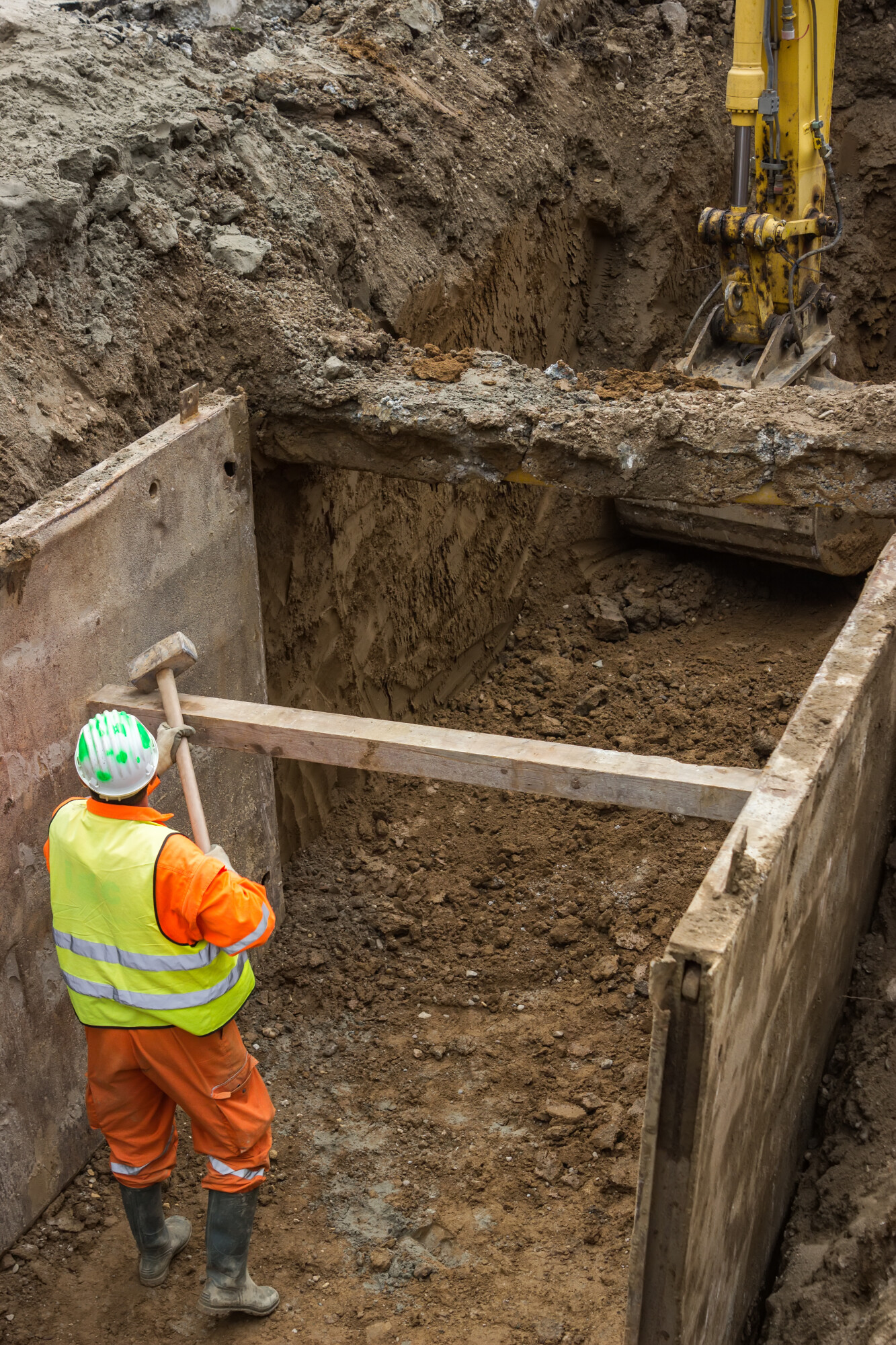Did you know that at least 373 fatalities have occurred since 2003 due to trenching and excavation?
Dirt can be deceptively dangerous. Without retaining walls, just a square yard of it–weighing 3,000 pounds at least–can crush unsuspecting workers. And unfortunately, most of these encounters are not survivable.
However, trenching and excavation both have notable differences, and contractors should not mistake one for the other. Understanding the two can help to ensure safety measures for each are adequate.
Keep reading as we discuss the difference between excavation and trenching.
What Is the Difference Between Trenching and Excavation?
The difference between trenching and excavating is subtle, but it is an important one. When you dig a hole into the ground, you’re excavating. The dimensions of that hole can be as deep or as wide as you like, and that’s all excavation in construction.
However, trenching is when an excavation is no wider than fifteen feet or so at the base, particularly in a long line. Dirt tends to collapse very easily. In a trench, you have a heavy wall of soil ready to fall without warning on anyone who is down digging inside.
Think of the trenches used when soldiers fought in World War One. They often reinforced these trenches with everything from sandbags to woven sticks. These measures were to keep the trenches stable during the course of the war.
Preventing Loss of Life With OSHA Trenching and Excavation
The important thing here to understand is that all of this is preventable. Every single one of these deaths since 2003 happened as a result of a negligent employer. OSHA has some helpful regulations on when and how you should use precautions for an excavation site.
According to OSHA, you should use some form of precautionary measures if the excavation (trenches included) reaches more than five feet deep. This means maintaining distance from the hole when slot trenching with hydrovac trucks to reduce the weight on the walls. Other precautionary measures include:
- Benching or sloping the ground
- Using planking or hydraulic jacks to shore the trench
- Using a trench box to shield the trench
Adequate Training for Trenching and Excavation Safety
Precautions are only half the battle. Many employees simply don’t realize how much danger a seemingly small wall of dirt poses to their lives. That’s why it’s important to train them properly.
Personal precautions they should use:
- Never dig without the aforementioned safety measures, even at the behest of their employer
- Stay away from utility lines
- Take time to do soil evaluations for stability
- Develop emergency plans in case of a collapse
- Use more extreme measures for deep trenches, i.e., twenty feet or deeper
Keep Safe When Excavating
Trenching and excavation involve digging deep into the earth to the point where the dirt becomes unstable. Especially in the case of trenching, without proper measures, a collapse can easily kill an innocent worker. Make sure to follow OSHA guidelines and train staff for emergency preparedness.
Follow our blog for more informative articles.

